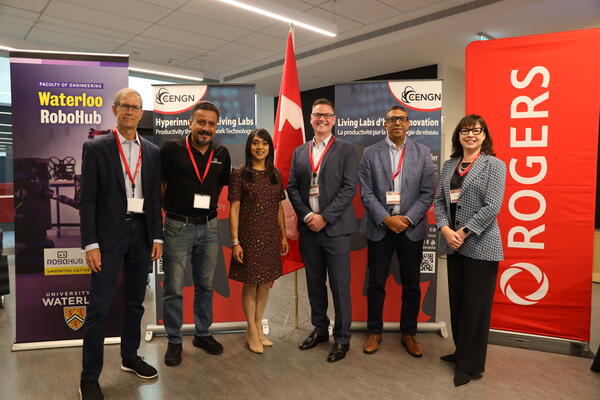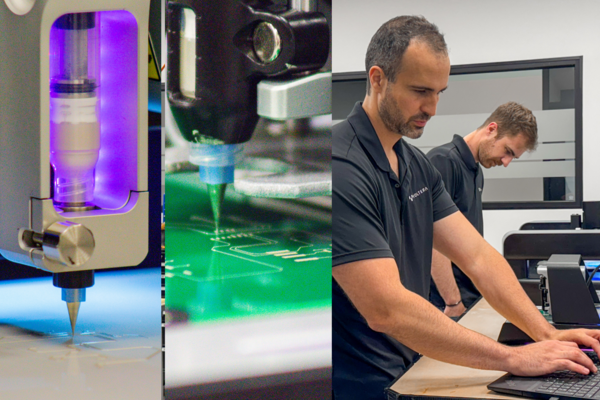
Game-changing new tech to make AR/VR, cellphone and laptop displays better
New technology can extend the battery life of electronics by 30 per cent, increase display brightness

New technology can extend the battery life of electronics by 30 per cent, increase display brightness
By Media RelationsTwo researchers at the University of Waterloo have combined their innovations to create a suite of new technologies that will increase battery life by 30 per cent and lower the cost of manufacturing. The new technology could be used in smart glasses, watches, tablets and other products.
The game-changing technology developed by Dr. William Wong and Dr. Manoj Sachdev, professors in Waterloo’s Department of Electrical and Computer Engineering, allow for the creation of MicroLED and flexible displays for next-generation augmented reality (AR) and virtual reality (VR) headsets and micro-displays. This new technology will increase optical brightness as the energy-efficient displays provide up to 30 per cent power savings while lowering the cost of manufacturing.
“The new technology employs novel solid-state lighting designs and innovative electronic circuits to enhance the brightness of flat panel displays while reducing their energy consumption,” said Wong. “The integrated technology enables next-generation displays that are brighter and more energy efficient for the screens used in cell phones and laptops.”
The technology has also led to the launch of a new start-up, Lumatus Semiconductor Inc., led by Wong, Sachdev and Mario Montana, an engineering alum. The Lumatus business model involves licensing existing patents and intellectual property, engineering services for the transfer and integration of the technology in customer applications, and coordination between industry partners and Waterloo on research activities. The technology has broad applicability in various display types such as LCD, OLED, and MicroLED. To date, a family of foundational patent applications in various jurisdictions have been filed.
“We are quite excited about the launch of Lumatus after a decade of collaborative, cross-disciplinary research,” said Sachdev. “Our energy-efficient technologies will lead to better and environmentally friendlier products.”
Both the Canadian and U.S. governments have announced significant funding initiatives to support the development of robust North American semiconductor manufacturing and supply chains to underpin national security resiliency. In the Canadian context, funding programs have been designed in part to support the growth of small and medium-sized enterprises. In this context, Lumatus Semiconductor is positioned well to be a contender in this burgeoning North American investment in the semiconductor sector.
For more information regarding the company, see Lumatus’ website.

Read more
Here are the people and events behind some of this year’s most compelling Waterloo stories

Read more
Living Lab initiative will help Canadian companies test and validate products and services at Waterloo’s RoboHub

Read more
Voltera prints electronics making prototyping faster and more affordable — accelerating research to market-ready solutions
The University of Waterloo acknowledges that much of our work takes place on the traditional territory of the Neutral, Anishinaabeg, and Haudenosaunee peoples. Our main campus is situated on the Haldimand Tract, the land granted to the Six Nations that includes six miles on each side of the Grand River. Our active work toward reconciliation takes place across our campuses through research, learning, teaching, and community building, and is co-ordinated within the Office of Indigenous Relations.